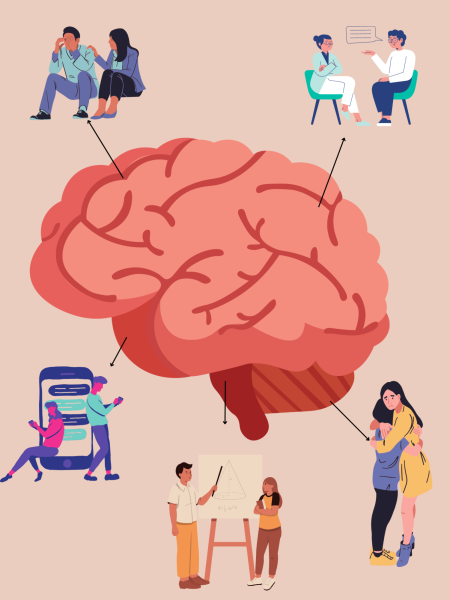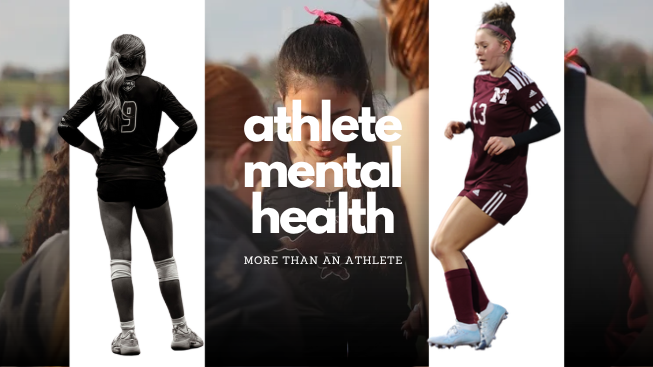At this point, we are all familiar with the words “Mental Health.” It has become the center of attention for sports, workplaces, and schools, but when and how did mental health become so important? Why is it such a sensitive topic? How has it changed over the years? What is a teacher’s role in dealing with mental health issues? These are just some of the questions surrounding why mental health has shifted into the limelight in the past few years.
Someone who has been around education and mental health with students for years is the superintendent at Mount Vernon Community School District, Dr. Greg Batenhorst. Batenhorst has been an adolescent mental health therapist, school counselor, teacher, coach, and administrator in his 40 years of education. According to Batenhorst, a giant change to mental health in kids today is a greater awareness but a decreased level of treatment for kids. Thirty years ago, students who had mental health needs would receive inpatient treatment for 30 to 45 days, then would go to an aftercare program for around three months in which the student would do outpatient care with a mental health therapist. If needed, the students could also be part of halfway houses or other programs for another six to nine months. Students with all sorts of needs got this treatment; “abuse or addiction issues, or came in with serious mental health issues, serious depression, eating disorders…” said Batenhorst. All in all, students would work with somebody for a year or more, a stark contrast to today, where a student could have a mental health crisis, even to the point of hospitalization, which would last about 48 hours, and go to an outpatient program for maybe a month.
Something that has stayed the same is the foundation that a school counselor must build with a student. Counselors must get to know students so that they can know when something is wrong and build a trusting relationship. About one and a half years ago, Mount Vernon High School hired a second counselor, Jordyn VanDraska, in addition to Brett Karkosh. Part of the process when a student walks into either of their offices is to ask what’s wrong, but then let them tell it in their own words. “I never put words into somebody’s mouth about how they are feeling, so I want them to be able to recognize what’s going on in their body and be able to verbalize out loud, advocate, and ask for a little help or support if they need it,” VanDraska said. As counselors, they’re not digging for information; instead, they let the student control the conversation and say as much or as little as they’re comfortable with.
As well as a change in how mental health gets treated, the cause of mental health issues has changed over the years as well. In addition to problems such as abuse, addiction, or depression, social media is a massive cause of mental health issues. Thirty years ago, cell phones and laptops did not exist, and Instagram, Snapchat, and TikTok did not exist, but now kids are constantly comparing themselves to other peoples’ success. Their happiness depends on how many likes or followers they have, and instant gratification leads to quicker downward spirals, random people telling you what they think about you, how you look, and act, everything overloading and overwhelming students. “Sometimes just looking at all the people and trying to keep up can be really overwhelming,” says Mount Vernon student Sophia Bunch. It is especially damaging to students because this is how they have grown up, and they are entirely dependent on technology and what other peoples’ lives look like compared to their own.
Batenhorst also mentions another factor that has built up over the years from the book, “The Price of Privilege” by Madeline Levine, who is a psychologist. It talks about parents who overprotect their children from pain or loss. If their child doesn’t get something or something didn’t go how they wanted it, the parent goes after the teacher, the coach, and the other parents. Paraphrasing the book, Batenhorst talked about how parents in this society have taken away the struggle for kids, not letting them work through their problems on their own. Being forced to deal with disappointments and not having someone to swoop in and fix the problem has impacted students today. Students not getting into the best college, not making it onto the team, not getting the grade they wanted. “Being saturated with those kinds of messages can do nothing over time but do harm,” Batenhorst said about the images that social media portrays to students. They lead to a “spiral of anxiety, depression and everything.”
Along with changes in mental health, there are changes in the priority of mental health in schools. According to Batenhorst, decisions made have been affected more and more by the mental health aspect of it and how it would affect students. The decision to hire a second school counselor, the implementation of the Leader in Me program at the middle and high school, and looking at a person’s emotional quotient along with their IQ when hiring a teacher to make sure they can handle mental health situations in their classroom, are all examples of how mental health awareness has impacted choices made for schools in particular. This is especially prominent when viewing a teacher’s ability to work with students on a different level that will help them succeed.
Another change that has happened in our school district over the past decade is the addition of Tanager Therapy mental health therapists, along with an emergency service through Foundation 2 Crisis Services, who can get to the school at the same time an ambulance would get there, but for a mental breakdown. “We could have a mental health professional within an hour to provide support to that child, the family, and if they needed some type of referral to a hospital or some type of more intensive therapy, we could have it done like that.” The use of these types of resources throughout the Mount Vernon School District is proof of just how much mental health has made an appearance, specifically in students.
Not only are emergency mental health professionals more accessible for students, but so are school counselors if you need to talk or do not feel good, emotionally or mentally. According to both Karkosh and VanDraska, the chief cause of mental health issues is anxiety. “One of the largest factors is academic pressures that students feel like they have to achieve at high levels at all times, which is a good and bad thing, but at the same time sometimes students do not know how to manage all their emotions all at once so it often causes anxiety attacks,” Karkosh said about the pressure to perform and its impacts on students.
A frequent piece of advice that both counselors give is to use coping skills and to know when you need to rest. VanDraska shares, “There is a time and place to push forward, but I also think there is a time and place to recognize that you and your body need rest or you need to break, being able to take that and go with it.”

In short, over the past 30 years, the awareness of mental health issues in society, particularly in schools, has gone way up. Social media and technology, which overload information, start to be too much to handle and too difficult to manage all our emotions and expectations. Following that, resources and access to mental health professionals have also increased, but it does not change the fact that students are dealing with issues a lot of them have not been equipped to handle, and that is what leads to more and more mental health issues.






